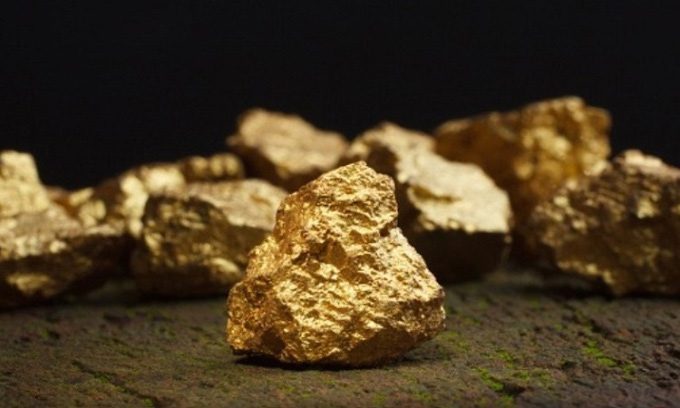Gold is one of the most valuable minerals on Earth. Gold is widely used in various fields, including jewelry, electronics, medicine, and finance. It is also an important foreign currency used for international transactions. The world has continued to increase its gold reserves by approximately 1.8% per year over the past century.
Many periods of “gold rushes” occurred around the globe, with most ore discovered in Australasia (including Australia, New Zealand, New Guinea, and nearby Pacific islands), North America, South America, and South Africa during the 19th century. It is estimated that of the total gold mined throughout history, two-thirds was produced since the 1950s.

Gold is one of the rare precious metals on Earth. (Photo: iStock).
The concept of “peak gold” refers to the period when gold production stops increasing. With a 1% decrease in output in 2018, for the first time since 2008, the supply of gold could no longer meet the high demand for products. This led to a global shortfall of 460.3 tons in 2021, prompting experts to suggest that we may have reached peak gold.
Although the Covid-19 pandemic caused mining activities to pause and slow down, the inability to meet industry demand may also be a result of fewer major gold deposits being discovered in recent years. However, the shortfall number for 2021 does not take into account the recycled gold reserves, which could offset the mining shortfall. The ability to recycle gold is just one of the many valuable characteristics of gold. As long as humans can continue the recycling process, it will help compensate for the declining mining output and meet the increasing demand.
The estimated amount of gold mined throughout history is about 169,643 tons, with the total amount of gold discovered at 221,353 tons. Thanks to gold’s indestructible properties and recyclability, most of this gold still exists. Although the figure may seem large, approximately eight times the weight of the Statue of Liberty, all discovered gold could fit into a cube with each side measuring 23 meters, equivalent to the length of a baseball field.
About 2,500 to 3,000 tons of gold are mined each year, with over 30% coming from the Witwatersrand Basin in South Africa. The concentration of gold in the Earth’s crust is 0.0013 parts per million. In comparison, the rarest metal on the planet, rhodium, has a concentration of only about 0.000037 parts per million. Gold in the earth is categorized as “reserves” (economically minable at current gold prices) or “resources” (requiring further study to determine economic viability or needing to be sold at higher prices).
The U.S. Geological Survey estimates that the underground gold reserves are approximately 51,700 tons, which is about 20% of the known gold that has not yet been mined. This means we could extract all currently known gold reserves in just 17 years. However, advancements in mining technology make it easier to discover new reserves and extract resources more economically, so it is likely that we will not exhaust all the gold on Earth in the near future.
Some gold reserves on Earth cannot be mined at a reasonable cost. For example, known deposits in Antarctica require extensive equipment and carry high risks due to the harsh conditions on the continent. Similarly, gold found on the ocean floor currently lacks a feasible method for extraction.





















































